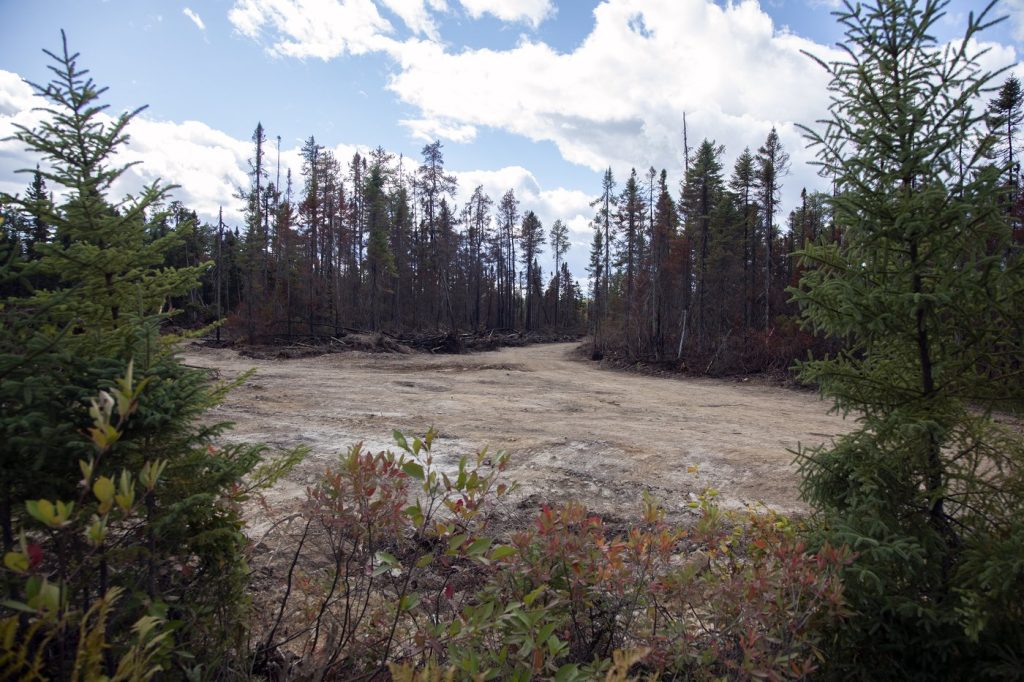MIRAMICHI – A lone black crow perched on a charred spruce tree symbolizes the stark aftermath of the recent Oilfield Road fire in northern New Brunswick. The once vibrant forest has transformed into a scene dominated by blackened trunks and ash, covering an area of over 14 square kilometers since the fire ignited in early August. After a prolonged effort, firefighters managed to bring the blaze under control by September 2, and the site is now under continuous monitoring.
To assess the damage caused by the fire, provincial forest rangers and firefighters guided reporters on a tour of the affected area. They detailed the scale of the firefighting response, which included 125 personnel, four excavators, and 11 bulldozers, complemented by aerial support from planes dropping fire retardants and water on the flames.
Bob Amos, a forest ranger and firefighter with New Brunswick’s Natural Resources Department, described the intensity of the fire, noting how dry conditions caused it to rapidly spread through the trees, often outpacing attempts at extinguishing the flames. "Any time you tried to put it out and tried to get close, the right wind would just blow it across ahead of you," he explained. The fire would rise into the treetops, making containment efforts nearly impossible.
Firefighting crews established base camps equipped with trailers, tents, food stations, and necessary equipment on the periphery of the fire. Roger Collet, another forest ranger, emphasized the extreme conditions, with temperatures reaching around 40°C. Firefighters were instructed to hydrate regularly, consuming about half a liter of water every 20 minutes to prevent dehydration amidst the grueling work.
Amos recounted how erratic wind patterns complicated their firefighting efforts. “The wind would be going one way and it would swirl, and it would come back on you,” he said, noting that embers would ignite unexpectedly behind them, necessitating rapid withdrawals from danger zones. On certain days, winds picked up to speeds of 10 to 15 kilometers per hour, further exacerbating the situation.
This summer has witnessed numerous wildfires ravaging significant areas across Canada, which not only destroyed ecosystems but also impacted air quality far beyond the sites of the blazes, with smoke traveling thousands of kilometers. While wildfires can stem from human activities or natural causes like lightning, the Canadian Climate Institute reports that they are becoming “bigger, hotter, and more frequent” due to climate change. Recent federal research supports the assertion that wildfire seasons are starting earlier, extending longer, and becoming increasingly difficult to manage.
During the tour, officials also showcased a ranger office in Miramichi, referred to as a “nerve centre.” This facility, outfitted with computers, desks, and maps, played a pivotal role in coordinating the response efforts to the wildfires.
Weeks after operations began, the lingering smell of charred wood hung in the air, creating an eerie quiet; the absence of wildlife was notable, with no sounds of crickets or birdsong. “Well, no birds are back here, yet,” Amos commented, highlighting the long recovery period that would be needed for wildlife to return to the area.
This report provides a vivid snapshot of the ongoing struggles faced by emergency responders in the wake of increasingly frequent and severe wildfires, underscoring the profound impact on both the environment and local ecosystems.










